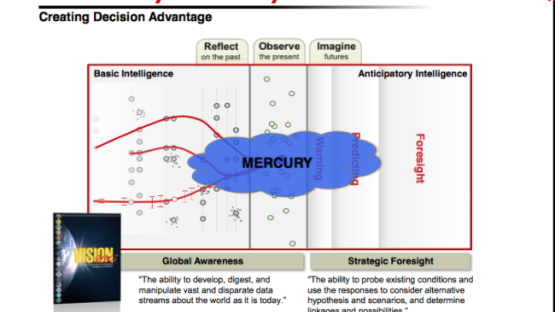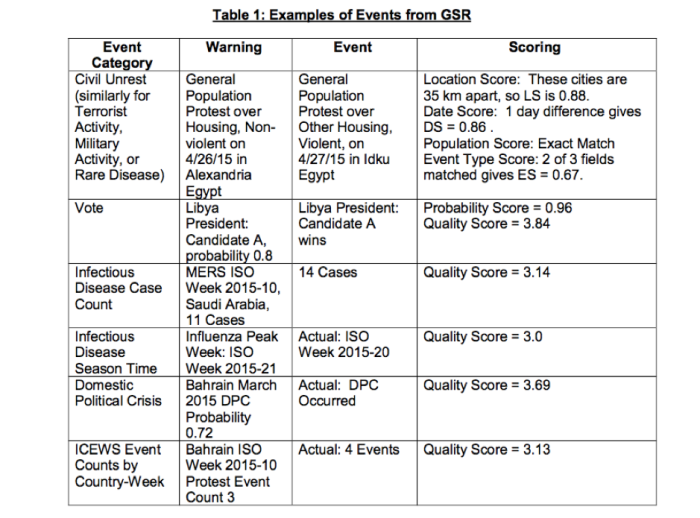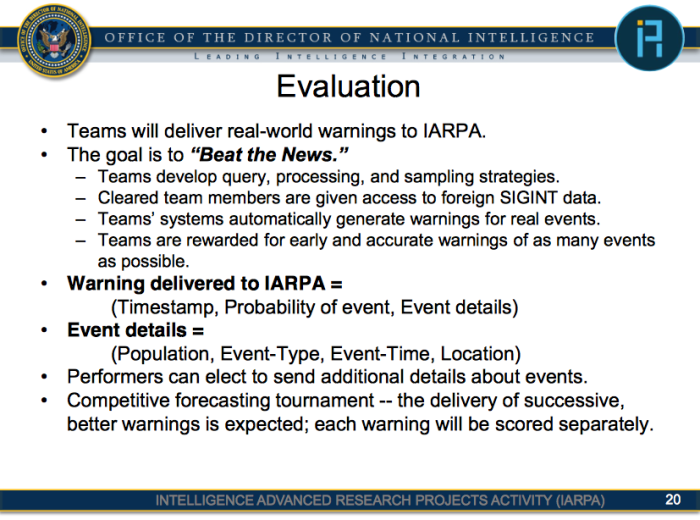True Profits: The Surveillance-Industrial Complex and the NSA Laboratory Doing Tests On Our Data To "Beat The News"

“FISA section 702 reauthorisation” might not sound like it matters very much to very many people, but it’s pretty dramatic: in short, last month US lawmakers rejected a bill which would have provided protections for US citizens – constitutionally protected against being spied on by US spy agencies – from being spied on, and instead voted to extend their powers to do so.
In the fall out, it’s worth considering just why such mass surveillance powers are such a big issue, how the promise of being able to predict the future is driving them, and how the US surveillance-industrial complex is utilising them to generate new powers and profit for itself.
The confluence of this can be found at the Intelligence Advanced Research Projects Activity (IARPA), the US government’s main spying research centre focusing on “high-risk/high-payoff” projects aiming to “provide our nation with an overwhelming intelligence advantage.”
Project Mercury, based at IARPA’s Office for Anticipating Surprise, aims to “develop methods for continuous, automated analysis of foreign SIGINT [signals intelligence] in order to anticipate and/or detect terrorist activity, military actions, political crises and disease outbreaks”.
Mercury uses communications and other data of people in Arab countries intercepted by the National Security Agency (NSA) to develop new ways to predict events worldwide, before they happen. The project, which began on January 2015 and is due to complete in January 2019, awards big US defense contractors and universities with millions of dollars to develop new predictive techniques.
As part of the process, researchers are provided with real intercepted data from real people whose data is swept up by surveillance, and are tasked with developing new techniques to predict events in Egypt, Saudi Arabia, Iraq, Syria, Qatar, Lebanon, Jordan, and Bahrain. Example of events, as outlined in a tender announcement, includes terrorist “activity”, but also the outbreak of infectious diseases, non-violent protests, and the likely results of elections – the confidentiality of which is a core democratic right.
According to a slide for potential proposers produced by IARPA, research teams’ goal is to “beat the news” by automatically generating early and accurate warnings for as many real events as possible. To assist them, teams are provided with raw SIGINT data and facilities at the NSA’s Laboratory for Analytic Sciences at NC State University, North Carolina, from which they “may request access to additional SIGINT data and enrichment repositories”.
One award of $18 million over three years has been given to Next Century Corporation, a defence contractor featuring on its Board of Advisors General Michael Hayden, the former head of the NSA and CIA, and Mike Rogers, a former US Representative and Chairman of the Permanent Select Committee on Intelligence. Next Century will be joined by researchers from other contractors as well as the University of Southern California, Virginia Tech, Harvard University, Northeastern University, and Carnegie Mellon.
The ability to predict events has been a recurring fascination of the US surveillance-industrial complex. After September 11th, IARPA’s military equivalent, DARPA, ran the Total Information Office, which aimed to centralise and mine vast amounts of databases to identify potential terrorists and events. Although the programme was eventually defunded because of civil liberties concerns prompted by media exposure, its component technologies were reportedly transferred over to IARPA’s predecessor at the NSA, then headed by General Hayden.
Among other predictive projects currently being undertaken at IARPA include Open Source Indicators, a project which “forecasts civil unrest, disease outbreaks, and election outcomes using unclassified data, such as social media, web search queries, online reservations, and other sources”. The world’s 4th largest arms company Raytheon, whose leadership includes a former defense secretary and other high ranking former government staff, is listed as a prime contractor, as is HRL Technologies, headed by a former senior advisor to IARPA.
Capitalising on US surveillance is lucrative business. A recent study estimated that some 70% of the total intelligence budget is handed out to private contractors in the US. IARPA, DARPA, and government subsidies provided to industry for military and intelligence research has played a vital role in the development of much of the technology we use today, including the internet, GPS, Siri, and the touch screen; one 2006 study found that 77% of the top 100 inventions listed by R&D magazine were developed with US government money.
Having defence and surveillance companies so close to government gives them dangerous powers over policy, not only because they operate from within government itself, but because they have unique access to decision-makers as well as the ability to promise them lucrative jobs in the private sector. Understanding the pivotal role these interests play in government surveillance programmes is often overlooked – not least because they are difficult and risky to investigate.
The US as the only military superpower has extensive access to the world’s communications traffic, facilitated by foreign surveillance operations, cooperation arrangements, and the location of internet infrastructure. In turn, this allows US government agencies huge access to people’s lives. While such surveillance powers are always based on countering serious crime issues such as terrorism, it’s worth remembering how this data can also actually be used – and how an industry whose prime motive is profit benefits from it.





